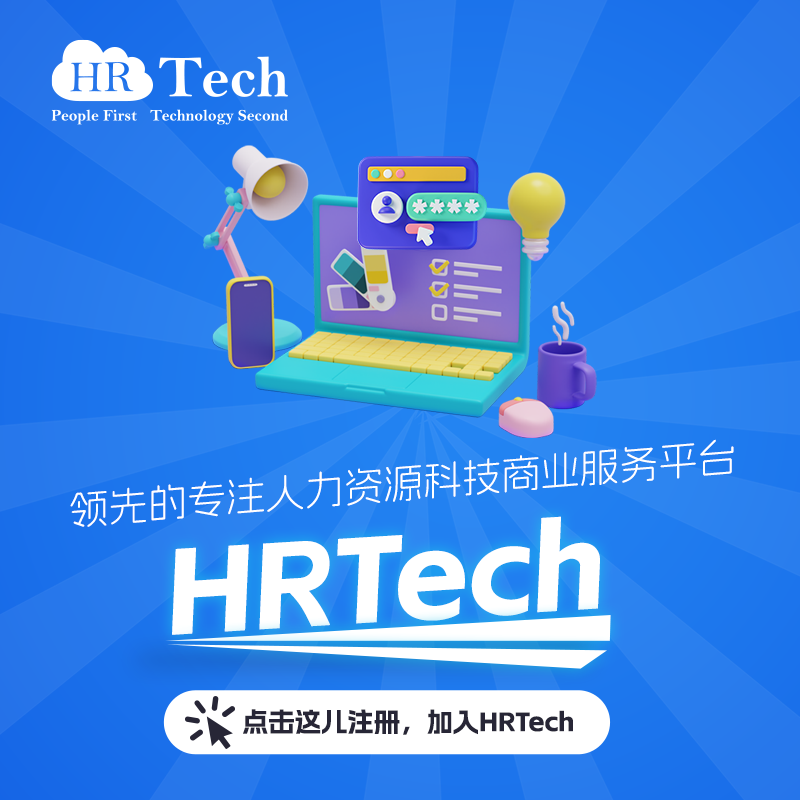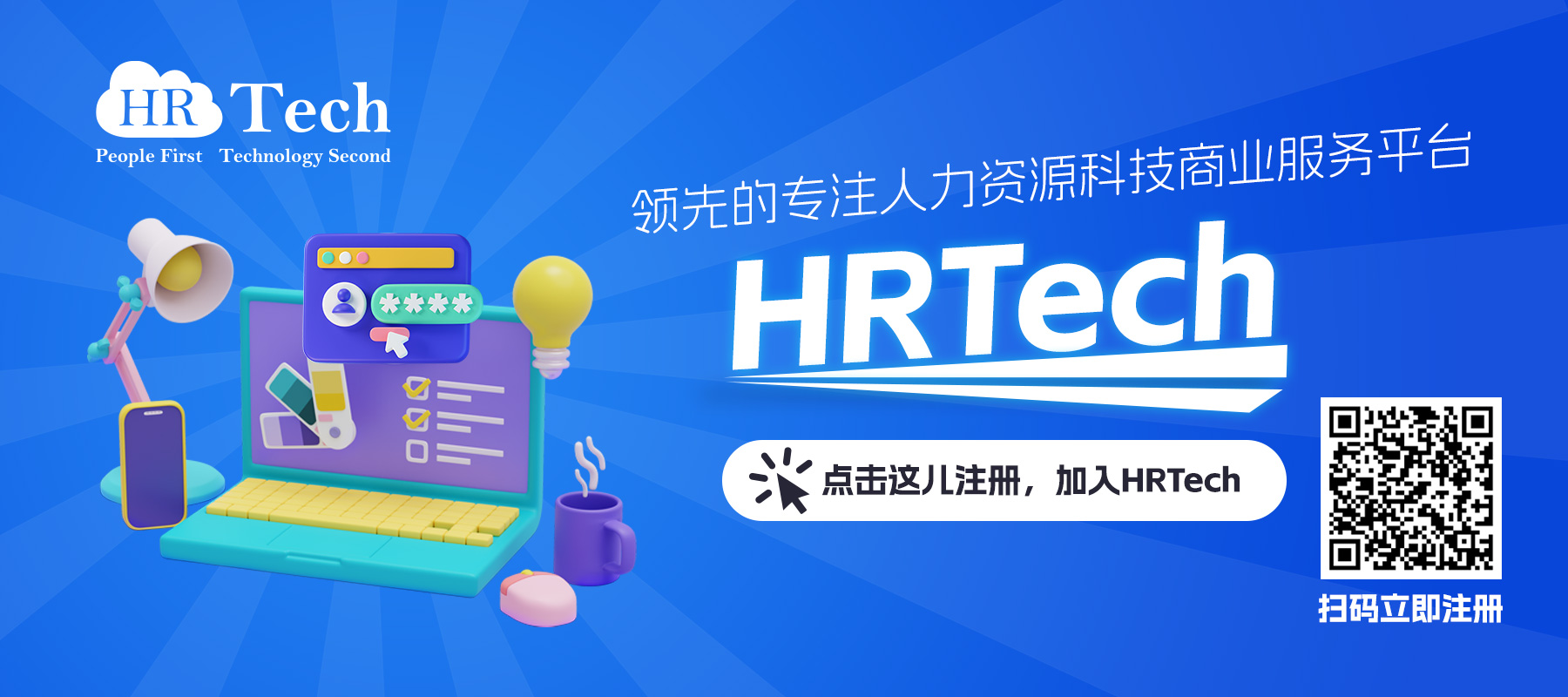资讯
云存储公司Box IPO发行价曝光:每股14美元
[摘要]以14美元的价格计算,Box在IPO中的市值将约为17亿美元,而融资额为1.67亿美元。
消息人士表示,美国云存储服务提供商Box于周四美国股市收盘后提交了最终版本的IPO(首次公开招股)文件,确定的IPO发行价为14美元。
媒体表示,这一价格尚未最终敲定,仍有可能改变。以14美元的价格计算,Box在IPO中的市值将约为17亿美元,而融资额为1.67亿美元。
本月早些时候,Box表示计划发行1250万股股份,价格区间为11至13美元,融资最多1.87亿美元。Box股票将于本周五在纽约股票交易所上市交易,代码为“BOX”。
Box此次IPO的主承销商包括摩根士丹利、瑞士信贷和摩根大通。
Box最初于去年3月向SEC提交了S-1招股书。然而,在随后一段时间里,多家已上市的云计算软件公司,包括Salesforce.com、Workday和ServiceNow,股价出现下跌。这意味着市场状况不再有利于Box的上市。
随后,Box决定继续融资。去年7月,Box获得了由私募股权公司TPG和对冲基金Coatue Management领投的一轮1.5亿美元的投资。
与大多数云计算软件公司类似,Box处于亏损之中,但营收增长很快。根据Box提供的数据,该公司目前的年营收运转率已达2.25亿美元,而在截至10月31日的前9个月中,该公司营收接近1.54亿美元,同比增长80%。
目前,Box的企业用户数约为4.5万家。该公司最大的问题在于如何控制庞大的营销成本。大部分客户最开始都使用Box的免费服务,而Box将为这些公司提供服务的成本记为营销费用。截至10月底的前9个月,这一费用超过5500万美元。
在10个月前的文件中,Box曾表示,当时每获得1美元营收费用支出就达到1.45美元。不过,随着许多免费用户逐渐转化为付费用户,这一数字已下降至每1美元营收的费用支出为97美分。
Box的业务也面临着日趋激烈的竞争。该公司常常被拿来与另一家云存储服务提供商Dropbox作比较。Dropbox从消费类市场起步,目前也在开拓企业市场。该公司拥有更庞大的用户基数。(李玮)
Re/code中文站 1月23日报道
资讯
专注于自由职业者的劳务资源平台Work Market近日获得了2000万美元的C轮融资
专注于自由职业者的劳务资源平台Work Market近日获得了 2000 万美元的 C 轮融资,由 Union Square Ventures 领投,参投的有 Spark Capital,SoftBank Capital,Industry Ventures 和 Silicon Valley Bank 等。
Work Market为企业客户提供自由职业者和承包商资源的一站式 Saas 平台,功能包括查找,核实,管理,雇佣,支付和评价被雇佣者,它提供的云端自由职业者管理系统(FMS,Freelance Management System ) 是目前市面上唯一囊括了,从招聘到支付薪水,几乎所有工作流程的的系统,这个系统为企业提供了管理自由职业者的监督考核及薪酬支付的一整套方案。
人们对工作的态度正不断发生变化,根据自由职业者联盟(Freelancers Union)的调查,美国每 5 个非自由职业者中就有 4 个表示愿意从事有酬劳的自由职业。预计到 2020 年,自由职业者的人数就会超过全职职业者。Work Market,就在这种趋势中抓住了机会。 它缩小了公司和自由职业者之间的距离:与以往的一些招聘网站不同,你在 Work Market 上基本看不到毕业学校或是出生年月日,你只能看到自由职业者的技能(比如安装平板电视,修打印机,驾驶货车,编程语言),客户满意度和准时率这样的信息,大大的提高了企业招人的效率。
另外对于自由职业者来说,他们获得的不仅仅是更多的工作机会。以往依附于一些中介,自由职业者的收入被层层削减,最后到手时却少的可怜。Work Market 的端对端服务省去了很多中间环节和不必要的手续费,为自由职业者增加了收入。另外,Work Market 还和在线保险经纪公司 Insureon 合作,自由职业者和承包商只需要花几分钟就可以在 Work Market 上责任保险,此举获得了许多雇用公司的亲睐。
Spark Capital 的合伙人 Mo Koyfman 表示,作为 Work Market 的早期投资方,他们认为其在不断变化的劳动市场中很有前景。Market Work 对劳务市场的重新定义,为市场带来了重大的改变。Work Market 的 CEO,Stephen DeWitt 透露,新的资金将会加速研发投入、开发市场潜力。同时,也将支持 Work Market 的扩张,发展更多的用户。
[本文参考以下来源:marketwired.com, workmarket.com]
资讯
Dropbox收购云端Office应用软件CloudOn
Dropbox今日宣布收购云端Office应用软件CloudOn,收购金额并未披露。
即日起,CloudOn将不再接受新用户注册,而到3月15日其服务将全面关闭,旗下团队30名成员将全部加入Dropbox。
CloudOn,它是一款免费云端 Office 应用软件,让你可以在网页、手机和平板上编辑微软 Office 文件,主要是在云端编辑文档、表格、幻灯片和 PDF 文件,并可以保存在 Box、Dropbox、Google Drive 等云端存储应用上,截止目前CloudOn在全国已拥有900万用户。
现在打开CloudOn官方,你只能看到头图中“CLOUDON JOINS DROPBOX”的声明了。不过,对CloudOn这家以色列创业公司感兴趣的童鞋,可以下拉官网页面,看看他们2010-2015年的发展历程图(如下图)。
[36氪,作者: Shirlene]
资讯
问答网站Stack Exchange获4000万美元融资,发展招聘服务
问答网站Stack Exchange今日宣布获得了一笔 4000 万美元的 D 轮融资,领投机构为 Andreessen Horowitz,其他参投机构包括 Union Square Ventures, Spark Capital, Bezos Expeditions 和 Index Ventures 等。借助这轮融资,Stack Exchange 的总融资达到了 7000 万美元,但该公司并未透露具体的估值和营收。
Stack Exchange 其实是一系列问答网站的平台,旗下的子网站总共有 133 个,覆盖了包括数学、园艺、物理、密码学、天文学、数据科学、摄影、经济学等不同领域的问答话题,其中最有名的就是程序员们耳熟能详的Stack Overflow,每月能带来超过 4000 万独立访客。这家成立于 2008 年的公司则在去年迎来了总数达到 3 亿的独立访客。
问答网站的模式不新鲜,最有名气的可能要属Quora。不过 Stack Exchange 的 CEO Joel Spolsky 认为他们与 Quora 还是很不一样的,最本质的区别在于,Quora 是社交型的综合问答网站,而 Stack Exchange 则更注重事实型问答。在 Stack Exchange 的网站上,客观类的专门知识问答才是主体,每个问题又都是有标准答案的。
问答网站靠什么活下去是一件很重要的事,在盈利模式上,Stack Exchange 主要依靠招聘服务和广告这两大块儿。招聘服务对 Stack Exchange 来说可以很快发展起来,因为社区里常年积攒着大批的程序猿和各领域专家,这些人很多都是互联网大公司们招聘的目标群体,从社区用户顺下搞招聘过渡得就会比较自然。Stack Exchange 也已经帮助包括微软和亚马逊等 1 万家公司招聘到了员工。
招聘服务这块儿在 Stack Exchange 营收里占的比例大概在三分之二左右,另外三分之一则来自于广告,主要是让广告商基于社区用户的群体特质进行针对性的广告投放。
对于很多问答网站来说,一方面要解决盈利问题,一方面又要尽量保持住社区用户的问答质量,前者靠模式,后者靠运营。Stack Exchange 在把握社区氛围方面也控制得很严格,Joel Spolsky 曾表示他们希望 Stack Exchange 是一个可以让提问的用户第一时间发现正确答案的地方,至于回答者是谁、长得好不好看、有多少粉丝这些都是不重要的。
Stack Exchange 的投资人 Chris Dixon 认为,随着越来越多的人拥有连接互联网入口的终端设备(手机、PC、平板),这个时代的一大创业机会就藏在如何分享和保存用户的精神创造成果(比如智慧、经验和知识)里。从这种意义上来说,Stack Exchange 和维基百科其实在做一样的事情——把每个人点滴的思想汇成一条可以共享的河。而当你在社区里攒齐了这么一波优质的高智商程序猿用户之后,盈利方面的问题同时也有了很多可以选择的方案。
国内目前的问答网站只剩下知乎一家一枝独秀,知乎自己在后期也开始察觉到社区质量下滑的问题,最明显的一点是专业答案的数量在下降。希望国外诸如 Stack Exchange、Quora 等问答网站的发展能给国内创业者们带来一些启发。
本次融资将被用于扩张规模,Stack Exchange 计划陆续推出日本、俄国和西班牙本地的网站,同时对一些问答社区进行投资。
[本文参考以下来源:medium.com, fortune.com 来源:36氪]
资讯
大数据分析公司Rubikloud获700万美元A轮融资,投资方多来自中国
根据官方消息,为零售商提供大数据分析服务的公司Rubikloud近日完成了 700 万美元的 A 轮融资,此轮融资主要用于扩大核心编程团队和数据科学团队,同时扩展在北美和中国的客户。
该公司为客户提供基于机器学习算法的数据收集,数据剖析和可视化服务。只要花半个小时将商家后台接入 Rubikloud 系统内,就可以开始收集相关数据。服务周期最短可以达到 30 天,也就是说它提供的是一种近乎实时性的,深度加工过的信息。在分析和呈现方面,并不需要一个新的平台来查看报告,而是可视化地呈现不同维度的信息,比如不同地区不同浏览器的转化率等等,从而帮助商家更好地在市场营销、定价、产品选择和用户体验优化等方面做决策。
起初公司的主要目标客户为一些电商企业,希望通过线上数据的收集和分析,作出帮助它们提高转化率的决策。但是之后公司意识到线下零售商也是需要类似服务的,何况大部分的购买行为还是在线下发生。
对大部分线下零售商来说,数据收集是一个很困难的事情。Rubikloud 的早期客户集中在时尚、健康和化妆品等垂直领域,因为这些商家大多已经得到大量的销售数据,只是需要加以分析反馈给他们,就会收到较好的改善效果。
值得一提的是,该公司的种子轮投资方为李嘉诚旗下的 Horizons Ventures,A 轮则是由 TOM 集团和 Ule(邮乐,2010 年 TOM 集团和中国邮政联合推出的,主要针对中国农村地区的电商网站)领投,Acess Industries 和一些其他私人投资者参投。
TOM 集团是李嘉诚旗下的长江实业集团与和记黄埔于 1999 年成立的合营公司,主要专注于电商领域。借助这轮投资,TOM 集团 CEO 杨国猛将会加入 Rubikloud 董事会,同时投资方的一些资源优势会为 Rubikloud 带来大量客户源,另一方面它与大陆农村电商邮乐可能擦出的火花也让人期待。
大数据的浪潮里有重量级玩家如Cloudera,去年已完成 9 亿美元的融资(其中 7.8 亿来自 Intel),但是 Rubikloud 是一家从垂直领域切入的轻创业公司,与曾经介绍过的Dato(原名 GraphicLab)类似。如果说未来是 AI 的天下,那数据就像 AI 的食物。收集数据并不困难,真正难的是如何更好地利用大数据帮人类做决策。
[本文参考以下来源:blog.rubikloud.com, crunchbase.com]
资讯
有人“拉勾”,有人“拉手”!天下的事情怕结盟!
招聘网站与猎头,天生的合作伙伴
招聘网站和猎头,分别占据人力资源产业链的一个环节,历来表面是井水不犯河水,但水面下却是暗流涌动,彼此竞争。而随着行业整合的深入,业界也出现了彼此合作以达成优势互补的竞争者。
近日,大数据猎头公司51猎头(www.51lietou.com)和知名互联网招聘网站内聘网(www.neipin.com)宣布,双方已建立战略合作伙伴关系,共享彼此的数据资源,对接服务体系,打通技术后台,互补优势力量,以加强在各自领域内的竞争力。
内聘网出简历,51猎头做服务
据介绍,两家公司的联合,将是业内首次跨公司达成招聘渠道与猎头服务直接合作的服务模式。内聘网作为互联网招聘领域的第二大服务商,上线近两年来,已积累了简历数超过10万份的专业互联网人才库,将是对51猎头简历库的有力补充。
51猎头是新近崛起的一家大数据猎头公司,用数据和算法取代传统猎头顾问来完成候选人与职位的匹配,并以此实现了猎头服务的超低价格。业界活跃的时间不长,但这家新公司已经至少创下了个行业纪录:猎头服务费最低纪录——仅收取候选人年薪1%作为服务费;扩张速度最快纪录——两周时间办事处铺遍全国15座城市。
对于既面向招聘企业也面向求职用户的招聘平台而言,内聘网在后端对接了51猎头低价高效的猎头服务,能够对其业务板块形成补充。
技术公司惺惺相惜
除了双方的资源互补,促成两家公司合作背后动因还有气质相近。51猎头和内聘网都是典型的技术驱动型企业。
51猎头是一家利用数据分析提供猎头服务的公司。通过对超过5000万份简历的数据分析,建立了一套数据化的岗位和候选人匹配模型,当启动一个猎头项目时,通过模型的自动匹配,由算法推荐最适合当前岗位的候选人简历。再由标准化的猎头服务团队完成后续的邀约面试和招聘求职双方的撮合工作。基于高效的机器能力和明确的分析算法,把大数据和人工智能作为武器,让专业的猎头人员武装起来,通过机器的辅助,效率和产能都得到了成倍提升。
内聘网在后台进行岗位与求职者的匹配时,也是在求职者和招聘企业两端,分别进行标签化的数据处理,用机器初筛加人工调优的方式矫正算法,最终形成一副职场标签图谱。求职者和企业可以在图谱上找到自己的位置,两者的位置越近,也意味着他们潜在的匹配率越高。
两家技术驱动型人力资源服务者的联合,也标志着开放精神正在从互联网行业蔓延至人力资源产业。
据51猎头介绍,其平台上已经对接了近30家简历渠道供应商,但像内聘网这样的招聘网站还是第一家。同时,51猎头还宣布,将在免费开放简历库的基础上,进一步开放开放自己的猎头服务平台,与产业链上下游加强合作,把免费开放的互联网精神继续在人力资源领域推进下去。
来源:人力资源研究
资讯
为小公司而生的律师匹配服务 Lexoo 获 40 万美元融资
在我自己的创业冒险旅程中,我得出了这样一条结论,无论你是成功还是失败,肯定能赚钱的只有两种人,云服务提供商和律师。关于前者,价格和竞争形势都相当的透明。然而律师费就远非如此了。这正是英国创业公司 Lexoo 正在着手解决的问题。
为了帮助实现这一愿景,这家提供了自称为“律师匹配”服务的伦敦公司刚刚完成了 40 万美元的种子轮投资,投资方为 Forward Partners——一家 由尼克·布里斯伯恩(Nic Brisbourne)领导 的风投公司及创业公司“工厂”——以及乔纳森·麦凯(Jonathan McKay,JustGiving 董事长)。
“对于小公司来说,找到一名优秀律师并在此过程中不挨宰是件难事,”Lexoo 联合创始人兼首席执行官丹尼尔·范·宾斯伯根(Daniel van Binsbergen)解释道,此前他曾是一位专注于金融与并购领域的律师。“名牌律师事务所通常都很棒,但管理费用繁杂,因此每小时收费很高。对于小公司而言,很难知道哪一位律师真的能干,是否擅长这一领域。最后,如果你采用一名推荐律师的话,很难判断你给出的价格是否合理。”
为了解决这一难题——可以将此视作网络将市场变得更加高效透明的经典案例——公司可以根据工作类型需求,通过 Lexoo 平台获得一批精选律师队伍的多方报价。在 Lexoo 平台发布工作后,你会从多个胜任该工作的律师收到富有竞争力的报价,通常在 24 小时内。
“我们确保只有真正擅长于特定法律领域的律师才能为某件工作报价,每一位律师加入平台之前,我们都会对他进行面试,”范·宾斯伯根说道,“客户可以将报价和律师履历进行比较,做出更加明智的决定。我们的卖点在于,帮你找到曾在大型律师事务所摸爬滚打的资深律师,只不过他们现在因为生活方式的原因选择在家工作或者在小公司工作。这一点使得他们的常规报价只有之前每小时费用的一半左右。”
为此 Lexoo 不收取客户费用,不过律师需要将任何通过这一平台拿到的工作报酬的 10%作为佣金付给这家创业公司。
Lexoo Scores $400K For Its Lawyer-Matching Service For Small Businesses
During my own startup adventures, I came to the conclusion that, succeed or fail, the only people guaranteed to make money are cloud providers and lawyers. With regards to the former, pricing and competition is fairly transparent. But legal fees, not so much. That’s the problem UK startup Lexoo has set out to solve.
To help with that mission, the London-based company, which offers what it calls a ‘lawyer-matching’ service, has just scored a $400k seed round from Forward Partners — the venture firm and startup ‘foundry’ headed up by Nic Brisbourne — and Jonathan McKay (Chairman of JustGiving).
“It’s difficult for small businesses to find a good lawyer and not get overcharged in the process,” explains Lexoo co-founder and CEO Daniel van Binsbergen, who previously worked as a lawyer focussing on finance and M&A. “Brand name law firms are usually great but have a lot of overheads and therefore high hourly rates. With smaller firms it is hard to know which lawyers are actually good and specialised. Finally, if you go with a recommended lawyer it is hard to judge whether the price you are quoted makes sense or not.”
To tackle this — in what can be considered a classic example of how markets can be made more efficient and transparent by moving them online — Lexoo enables businesses to get multiple quotes from a curated line-up of lawyers, based on the type of work required. After posting a job, you receive multiple and competitive quotes from the qualified lawyers on the platform, usually within 24 hours.
“We make sure that only lawyers who are actually specialised in a certain area of law are invited to quote for a job and we screen and interview every single lawyer before they can join the platform,” says van Binsbergen. “Customers can then compare the quotes and lawyer profiles and make a much more educated decision. Our sweet spot is finding lawyers who trained at the largest firms but for lifestyle reasons are working at home, virtually or in a small office. This enables them to usually charge only 50 per cent of their previous hourly rates.”
To that end, Lexoo is free for clients, but lawyers pay the startup a 10 per cent commission on any work they obtain through the platform.
来源:techcrunch
资讯
短简历:能够提供薪水预测的招聘平台,已获梅花创投等合投A轮融资
“猎头这个行业已经被玩坏了,老一代猎头能提供的服务,比如薪资预测,薪水谈判,行业调查,内幕介绍之类都没了,现在的很多猎头已经被做成电话销售了,关于候选人的信息一无所知,电话打过去就问求职者看不看机会,不看机会就套点信息,实在没什么意思。”这是来自短简历创始人储浩对行业的看法,基于此, “短简历”的初衷,就是把以前的猎头们能提供的服务,用互联网的功能还原出来。
短简历从求职者角度出发,目前主打的一个功能是薪水测试,短简历可以准确测试出求职者去跳槽的公司拿到的薪水,并且误差一般不会超过3%,此功能已经申请了专利。用户只需填写短简历即可体验薪水预测及求职服务,薪水数据库的获得渠道主要来自创始人储浩个人资源、已有用户提供以及其他渠道(不便透露),对于隐私性较高的薪水数据的积累是相当困难的,但是短简历团队很努力,目前已扩充到四十多万的准确数据。 短简历希望提供更多有效的服务和功能,让求职者在选择机会时有更多可以参考的依据。
同已有招聘网站类似,短简历也同时支持“长简历”,以供招聘方更好的选择人才,而平台方也会定时匹配岗位推送给求职者,这个频率由求职者决定。 创始人储浩曾在全球第二大的人力资源服务公司做猎头,团队成员来自于百度,阿里,高德等国内知名互联网公司。对于未来,储浩告诉猎云网,初期主要的精力还是在优化产品功能上和积累薪水数据上,把用户服务做深做透,做到用户求职时不用动脑子也能做出最优选择,还没有准备横向发展以及走商业模式。现在已获梅花创投和华璟海纳资本合投的A轮融资。
在网络招聘市场,主要有传统招聘公司(前程无忧、智联招聘)、新型招聘公司(猎聘网、拉勾网)、职业和商务社交网站(Linkedln领英、大街网、天际、人和、优士、若邻)、分类信息网站(赶集网、58同城)几大阵营。传统招聘网站人口红利逐渐消失,很多依然在用“广告”模式做招聘做,服务意识较差。信息依然不对称,简历得不到反馈,企业难以找到想要的人才。
披着互联网外衣的传统思维依然占据主流,需要找到能让用户求职需求和企业用工需求迅速匹配的更好方式。短简历的核心竞争力是清晰可见的,也是直击求职者痛点的服务,以后会逐渐扩大覆盖的行业,也会推出APP。但如上文提到的,不论是何种类型何种时期的招聘网站,都在面临不小的挑战。
来源:猎云网
资讯
人力资源管理在移动互联时代如何蜕变?
// //
移动互联的本质
我的感觉是,现在很多人在做互联网的事情,但是不一定都理解互联网的本质。
人的生意是从大利益逐步到小利益的发展过程。过去我们关注大利益,用50块钱是难以去理财的。而现在的趋势是往“小”的方向走。1个人的50块钱不算什么,但是1亿人的50块钱就是大价值。
从科斯的交易成本理论来讲,移动互联的本质是让小利益的交易成本为零,零成本地将小利益汇聚成大价值。
海量信息的量变可以引起质变。百度文库就是互联网思维,把微不足道的人调动起来,上传微不足道的东西,形成了大价值。一个人的信息可能不重要,但是有13亿人的信息时就很重要了。每个人的一句话是不重要的,但是如果13亿人都有一句话,就重要了。
时代的发展必然会让我们关注小利益,以前这些小利益难以被解决,但是移动互联的出现让我们拥有了解决小利益的技术和平台。抓住“微”就抓住了移动互联的本质。
移动互联与人力资源管理的关系
移动互联让我们做成了以前想做但是做不了的事情。
1、战略:关注未解决的小利益
过去做生意,总是从大处着眼,而现在都会关注人的小利益。战略不一定要“大”。做100个人每人100万的生意不叫移动互联的思维,做1亿人每人1块钱的生意叫移动互联思维。在战略上,要琢磨清楚还有什么小利益没有被解决。
2、工作分析:分解、碎片化、IT化
工作分析离不开分解。泰勒科学管理原理的核心就是分解,这是要把非常复杂的事进行管理的重要步骤。对于企业来讲,有专业化的横向分解和层级化的纵向分解。通过横向纵向的分解形成一个结构,每一个岗位都会在一个具体的位置上。
在科学地设置岗位的前提下,要让每个岗位、每个人发挥作用。人力资源管理的效率可能来自碎片化的管理。碎片化管理就是让每一个岗位每一个细胞都很活跃。什么东西会导致碎片化的效率最高?自我管理,员工参与。如何让员工参与并自我管理?通过IT系统,IT是保证碎片化的效率的手段。
分解导致细化的效率,细化导致碎片化,移动互联技术将此固化。
3、招聘:大数据与微招聘
微信招聘、云招聘对于我们来讲,已经不是新鲜词汇。在移动互联时代,招聘不再是按部就班、进展缓慢的过程。我们可以在手机上进行投递简历,查看应聘进程等操作。
移动互联和传统互联最大的区别就是交互,把很多中间环节都去掉了。移动互联发达之后,其实中介机构的力量会减小。这也是值得关注的趋势。招聘是社交化的,基于移动互联的社交圈可以成为招聘的优质渠道。通过社交网络,实现求职关系的碎片化,创造更多的匹配机会。
基于云的系统也可以记录和获取各种数据,招聘过程和人员管理的数字化能有效的匹配人选。使用高科技,使用数据来让招聘变得更加精准有效,成本低廉,速度更快。大数据一定是招聘的未来。
4、培训:大数据、微培训、为培训提供激励
用大数据来做培训规划。超市要以绩效差距来做员工的而培训规划,会碰到很多挑战。主管要找每个人谈差距,这是很费时的。但是用一个技术手段就能解决这个问题。比如大数据,一个顾客进来你说了多少话,你给顾客介绍商品的次序,这些都可以用数据记录下来。用数据记录每个员工和每个顾客的行为,并进行分析。用大数据来确认员工的能力差别,从而进行培训规划。
用微培训建立移动的行动学习课堂,实现碎片化学习。饭店新员工很多,主管要告诉他们怎么端盘子,怎么收银等等。原来的培训方法是师傅带徒弟的,如果在主管服务的时候,有员工把这个过程拍下来,上传到网上,大家不仅可以随时随地观看,并且还能进行分享、回复。通过微课程上传和微课程查看的方式,增加互动,节省时间。
为员工提供培训激励。比如用社交媒体的手段提升学习的兴趣,大家可以互相交流培训感想,分享好的培训课程等等。也可以采用积分制,每学完之后得到一些培训学分,用学分兑换积分,获得小奖励。
5、绩效:绩效云系统
绩效管理很重要的是要有数据依据。通过人力资源计量明晰绩效考核的依据,了解员工的绩效差距,计算绩效管理的投资回报率。同时,移动互联技术可以实现绩效的实时跟踪,从而进行及时的绩效辅导、沟通和提升。在IT系统中,每个员工都可以参与进来,实现人力资源管理的即时性和交互性。比如说,员工有个自己的账户,将信息即时输入系统后,主管审核。既让员工有承诺,也要直线经理参与进来。通过绩效云系统,将僵化的绩效管理变成动态的、互动的、数字化的,这是绩效管理的一大趋势。
6、薪酬:即时认可与工作-生活平衡
当今时代,移动互联技术的发展为认可激励提供了前所未有的发展机遇。小利益的汇集可以创造大价值,而互联网的本质就是零成本地将小利益汇聚在一起,形成大价值。员工表现好,就可以利用移动互联对其表扬,让大家点“赞”,这是员工行为中的小利益。要对大量员工进行即时认可是很困难的,但是利用技术手段,可以轻松实现所有人的认可激励。当所有员工都实现了即时认可,实际上创造了大价值,实现动态激励。
人力资源管理的两个趋势,去人化趋势和人性化趋势。去人化指的是绩效尽可能不依赖人,人性化指的是很顺着人的性子,绩效还很高。工作-生活平衡就是解决这个问题,让大家变得很舒服,让绩效变得很高。工作-生活平衡的本质,在极大化地尊重人性的前提下,找到不断提高绩效的方法。很多公司有弹性工作制,员工可以在家里工作。这是因为移动互联技术创造条件,打破了工作的时间和地域限制,交流间接化,工作时间弹性化,工作地点弹性化,从而使管理更顺应人性。聪明工作胜过辛苦工作,聪明工作带来工作与生活的平衡。
不少人说,人力资源管理正在被移动互联颠覆。与其说是颠覆,不如说人力资源管理在移动互联时代蜕变。移动互联只是一种工具,利用这一工具,人力资源管理能够实现对小利益的关注,将无数小利益零成本地汇聚成大价值。
移动互联再往前走,一定可以再分解。具体分解到什么状态我们不知道。在设备方面,带通讯功能的可穿戴的移动设备,这可能是下一个趋势。
这不仅是人力资源管理的变革,而是整个时代的变革。在变革风潮中,人力资源管理正在蜕变,我们每个人的小利益被关注,也应不断地关注他人的、社会中未被解决的小利益。
资讯
日本人力巨头Recruit将收购两家澳企
// //
澳大利亚《金融评论报》1月15日报道,日本人力资源服务巨头Recruit即将收购本土上市同行Chandler Macleod,交易价值3.82亿澳元,比后者当前市值1.658亿澳元高出130%。据悉,Recruit将向对方支付2.9亿澳元,同时接手对方的债务。
Recruit是全球最大人力资源服务公司之一,市值2.04万亿日圆(215亿澳元)。该公司还会从Navis手中收购澳大利亚最大技术雇佣公司Peoplebank,但交易金额尚不明朗。澳大利亚人力资源服务商目前经历着一轮重大的整合。
Chandler Macleod正处于为期两年的盘活阶段,这个计划使其削减了成本。该公司2013财年的净利润跌至仅有1,110万澳元。许多投资者认为其增长前景不佳,利润率低。Peoplebank的CEO艾奇逊(Petert Acheson)表示,交易将令该公司继续在亚洲扩张。Peoplebank最近在马来西亚开设了办事处,正计划在新加坡提供银行招聘服务。艾奇逊说:“没有发生合并。双方会各自独立运作。我们将继续在澳大利亚和东南亚扩张。”
来源:环球网
扫一扫 加微信
hrtechchina
 资讯
资讯
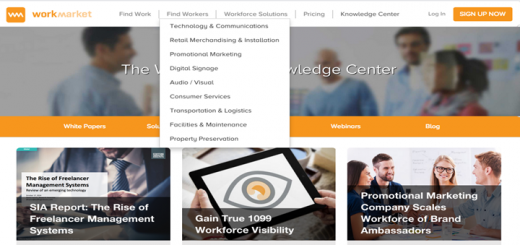 资讯
资讯
 资讯
资讯
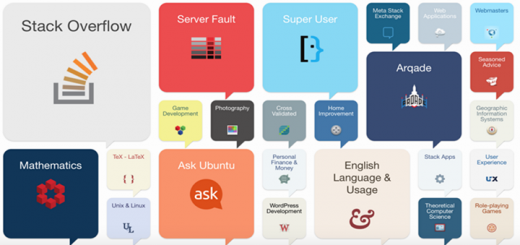 资讯
资讯
 资讯
资讯
 资讯
资讯
 资讯
资讯
 资讯
资讯
 资讯
资讯
 资讯
资讯




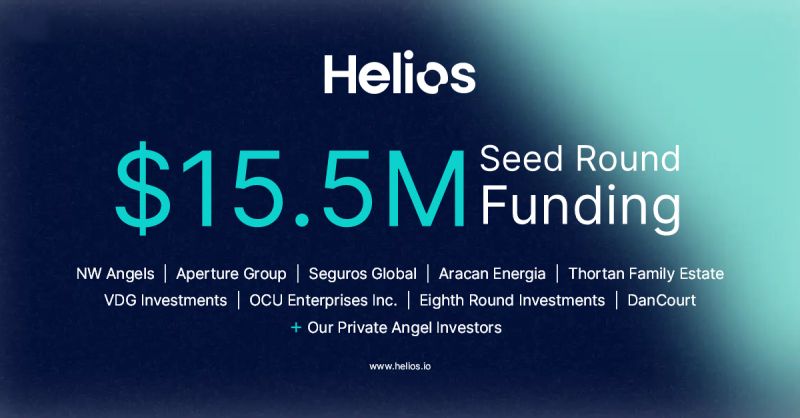
 扫一扫 加微信
hrtechchina
扫一扫 加微信
hrtechchina



